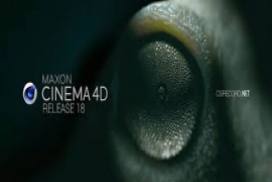

Once we do that, the noise is starting to create a little bit of variation in the surface. So, let's go ahead and set this to 210 nanometers. This is because we first need to define how much variation can occur. Once we do this, there's not going to be any change that happens inside the view port. Then, we can go ahead and add a noise into the texture slot. So, we'll start by setting the thickness to 520 nanometers. Now, the main attributes that we're going to adjust are going to be the thickness in nanometers, and a variation on that thickness that's controlled by a texture. This means that it's going to work best with scenes that are modeled to a real world scale. It should be noted that the thin film shader is a physically accurate shader. So, we're going to click on the thin film shader to bring up its attributes. With this active, we can now see a good preview of the thin film shader. Now, so we can actually see what we're working with in the view port, we're going to hit Alt or Option R to bring up the interactive render region. We can then activate the color channel so that we can see what we're looking at, and then we'll go to the texture menu, effects, and then add the thin film shader. So what we'll do is we'll start by disabling all the other channels in our material, and then we'll go to the color channel.

Now, because this is a transparent material, it is going to render a little bit slower, and it's going to be harder to see the full effect of the shader that we're adding. So, we can minimize the picture viewer and just hide our render settings there for a second, and we'll jump into setting up the material. So, although it is a bubble, it's not as interesting or as realistic as we could want it to be. And the result that we get from this is something that looks like this. So, we have our soap with a transparency, a fresnel inside the texture, and some simple reflectance channels set up. Now, the first thing that we're going to do is take a quick look at the soap bubble material that we currently have. So, let's take a look at how we can create this sort of effect. Once such example is the swirling colors that can be seen in soap bubbles. The thin film shader is used to simulate thin layers of oil and other refractive surfaces that coat every day objects. In this video, we're going to take a look at the thin film shader inside Cinema 4D R18.


 0 kommentar(er)
0 kommentar(er)
